Creators Driving the Fourth Industrial Revolution
Innovative City Forum 2018
Digital technologies empower every individual to work more creatively and innovate. Cities will be the platform for innovation.
In October 2018, Innovative City Forum 2018 was held at Roppongi Academyhills, Tokyo. Each year, this three-day international forum invites speakers with expertise in multiple fields ranging from advanced technology to modern art to participate in animated discussions under the main theme: "Designing the future for global cities and lifestyles."
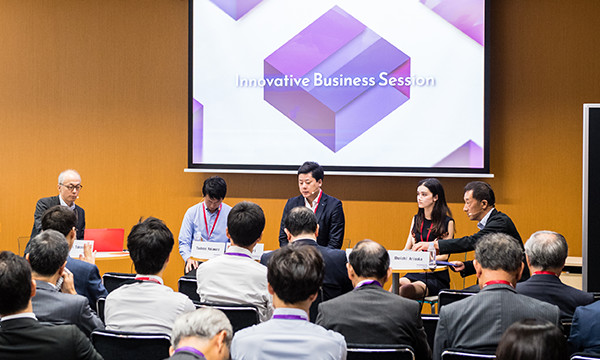
At the forum's Innovative Business Session held on October 19, Fujitsu sponsored a panel discussion entitled: Creators Driving the Fourth Industrial Revolution – Reinvent cities through continuous DevOps -.
Participating in the discussion were Tsubasa Nakamura, representative of CARTIVATOR, a volunteer group that is developing a flying car; Akira Fukabori, director of AVATAR Program at Digital Design Lab, ANA Holdings; Risako Nakamura, a fashion designer and digital fabricator who explores the structural design of apparel using a fusion of advanced technology and traditional crafts; and Shoichi Arisaka, CEO of TechShop Tokyo Limited, one of Japan’s largest makerspace enabling individuals and organizations build prototypes and products on their own. Yoshikuni Takashige, who is leading the creation and communication of future vision at Fujitsu Limited, served as the panel's moderator.
The Fourth Industrial Revolution Driven by Creators
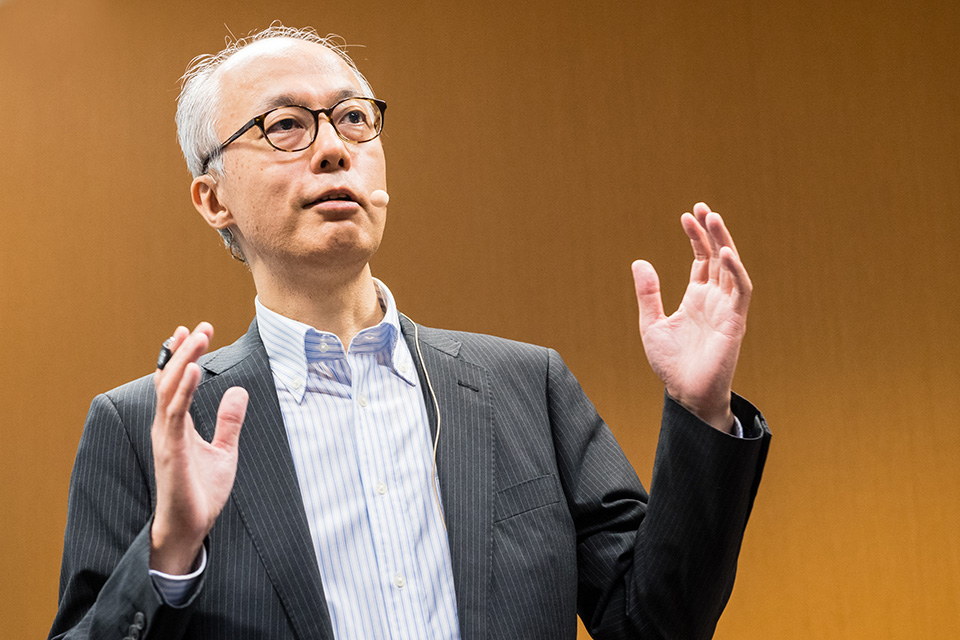 Yoshikuni Takashige,
Yoshikuni Takashige,
VP of Marketing Stratefy Unit, Fujitsu Limited
Fujitsu's Yoshikuni Takashige opened the discussion by saying, "Today, the world is facing serious challenges such as global warming and population increase. At the same time, AI and other digital technologies are being increasingly embedded into business and our everyday life, boosting productivity significantly. Amid this transformation, we call the Fourth Industrial Revolution, the new way DevOps has emerged as a key to leveraging digital technology. It means seamlessly integrating the processes of “Development” and “Operation” on a democratized digital platform, and delivering business outcomes through fast reiterations of development. I believe the most important factor in DevOps is people. This approach demands the transformation of human skills, organizations and cultures, allowing developers and operators to collaborate as one team. Today, I would like to discuss how we can reinvent cities in the same way, using DevOps as an analogy."
Takashige then presented a manifesto for the theme, ‘Creators Driving the Fourth Industrial Revolution’. "The advance of AI marks the start of a new era of collaboration between people and AI. In this era, critical capacities wanted for people are empathy, creativity, and problem solving capabilities. AI and other digital technologies are being democratized to connect and enable people to turn ideas into realities. It is a world driven by people = creators. Their city as a platform empowers people to co-create innovation. Here, production and consumption are seamlessly integrated into one-just as in DevOps. The city becomes a human-centric, self-healing ecosystem that can overcome any problem. In Roppongi, this new ecosystem has already started to grow. The seeds of our future are here, just in front of you."
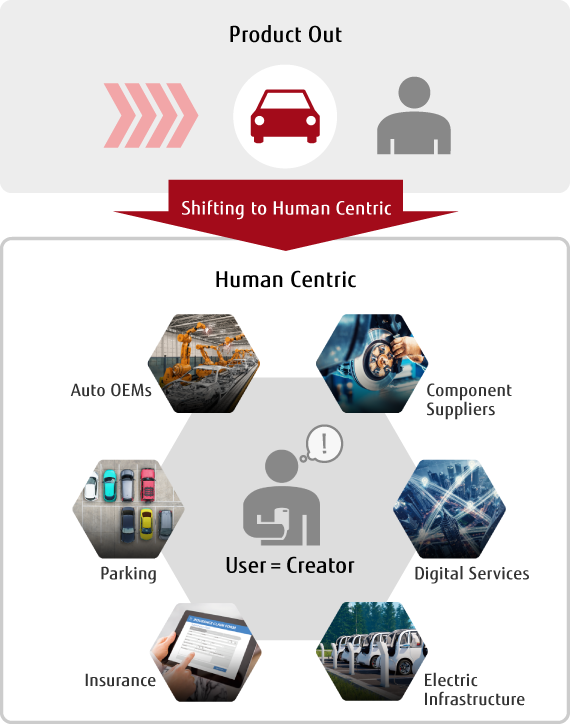
Shifting from offering only products to overall services through user’s perspectives
The core of this vision is the human-centric ecosystem. The previous product-out business model employed by business and public sectors to deliver standardized products and services is no longer valid. The boundaries between industries no longer make sense. Today, digital technologies connect various players across industries, enabling them to form ecosystems to co-create human-centric value that people truly want.
Takashige stressed that "Every individual can be a creator to solve challenges in this ecosystem. Leveraging digital technologies and various services that cities will provide, people will be able to work more creatively and collaborate with experts as well as business and public organizations. We have a significant opportunity to realize our dreams, and reinvent our cities."
Following Takashige’s introduction, each of the panelists spoke about their ideas and initiatives to the audience. The panelists, pioneering innovators share one thing in common. They are all actively working at TechShop Tokyo, an open innovation platform of the city. This is the largest-class makerspace in Japan that was opened by Fujitsu at Roppongi Arkhills in 2015 in collaboration with Mori Building Co., Ltd.
A Flying Car in the Olympic Sky
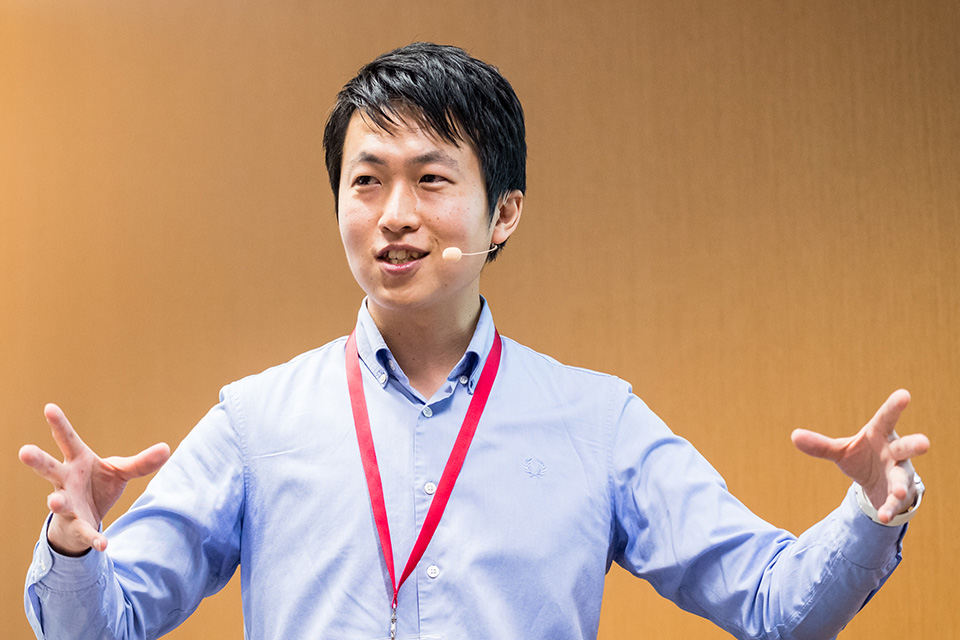 Tsubasa Nakamura,
Tsubasa Nakamura,
representative of CARTIVATOR
Tsubasa Nakamura co-heads CARTIVATOR, a group of engineers and supporters working to develop a flying car called SkyDrive. His dream is to have the car drive into the New National Stadium at the 2020 Tokyo Olympic Games, take off, and fly up to light the Olympic cauldron.
After working at a major Japanese automaker as a design engineer for mass-production cars, Nakamura started CARTIVATOR in 2012 to realize his boyhood dreams. Since 2014, he has been leading the SkyDrive project, which currently has over 100 volunteer members who work on the project in the evenings and on weekends at TechShop Tokyo and other locations. The organization consists of two teams: a technical team made up of auto and aircraft engineers, and a business team made up of advertising agency personnel, bankers, entrepreneurs, and university students. Nakamura refers to it as "the ultimate multi-industry expert volunteer organization."
Nakamura spoke passionately of the project’s mission "to deliver a ‘dream’ to the next generation through mobility," and expressed his fervent desire to "make the impossible possible, and create a better world for the next generation." The group’s long-term goal for the year 2050 is to enable anyone to fly anywhere, anytime. As a short-term goal, Nakamura is looking to 2020, the year of the Tokyo Olympic Games, when CARTIVATOR is planning to demonstrate SkyDrive's flight capabilities.
CARTIVATOR also receives technical advice and logistical support from universities, auto manufacturers and local governments that share the project team's vision. With spirit and imagination, they are expanding the ecosystem of co-creation aimed at realizing Japan's first flying car.
Exceeding the Limits of Experience with Avatar
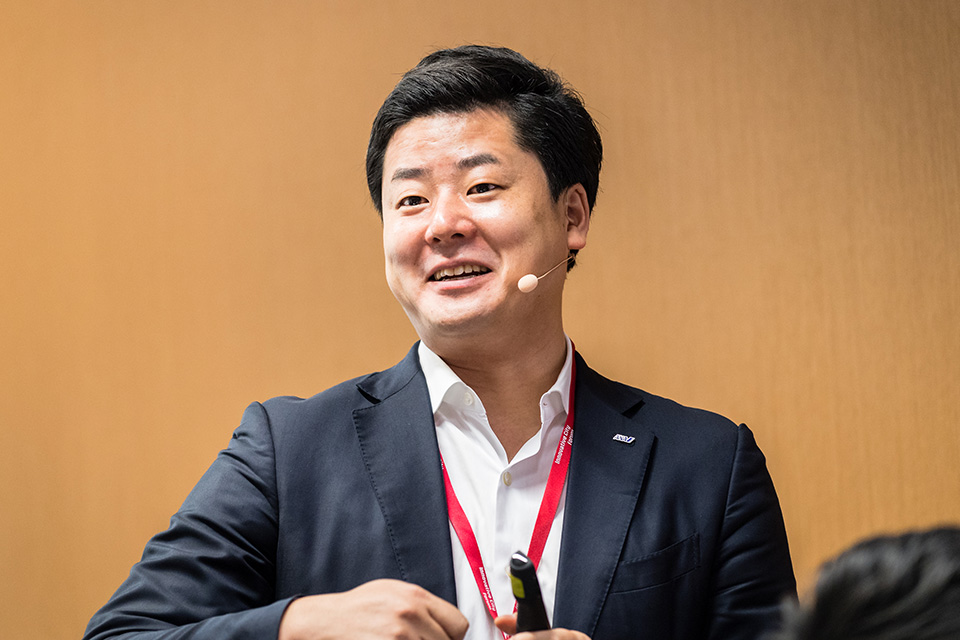 Akira Fukabori,
Akira Fukabori,
director of AVATAR Program at Digital Design Lab,
ANA Holdings
An engineer on the Earth building a base on the Moon.... a child in a hospital room playing with her friends on the beach.... a patient on a remote island being diagnosed by a doctor he cannot visit.... children in a faraway village participating in classes held at a school in the city.... These are the dreams of Akira Fukabori, Director of the ANA AVATAR VISION Program.
Since its founding, All Nippon Airways has sought to contribute to the society by connecting people across the globe, and Fukabori described the AVATAR program as a technological extension of this mission, effectively providing a service that can be called "a door to anywhere." With rapid advances being made in robotics, virtual and augmented reality, sensors, telecommunications, and haptics, Fukabori believes it is only a matter of time before avatars become as common as smartphones. He describes avatars as teleoperated robots in remote locations that enable humans to communicate with others or perform tasks in those locations while receiving visual, auditory, and tactile feedback and transmitting their own consciousness, skills, and presence to the robots. He also noted that avatars allow us to instantly transport our consciousness, not just to remote locations, but also to places that are inaccessible to humans, and to perform tasks that would otherwise be physically impossible.
In the effort to make the vision come true, Fukabore submitted a proposal to the XPRIZE Foundation, a U.S. West Coast-based NPO established by innovation guru Peter Diamandis and other entrepreneurs and business leaders to promote private sector innovation worldwide. The foundation, which is well-known for organizing incentive competitions for private space travel and a private lunar surface mission, awarded Fukabori's proposal its Grand Prix in 2016, making the ANA AVATAR XPRIZE its next official international incentive competition.
In Japan, ANA AVATAR VISION program has also undertaken proof-of-concept projects with industry, government, and academia. The government of Oita Prefecture, for example, allowed Fukabori’s team to choose any place in the prefecture as a test field for the development of avatar services. In addition, the team also works at TechShop Tokyo for testing and experimentation.
Fukabori attributes growing interest in avatar co-creation efforts to the point that they represent not just a business opportunity, but rather "a dream for all mankind." As he puts it, "Everyone wants to immediately experience the world as they wish, free of physical, temporal, economic, and other constraints that limit their ability to travel. It is this dream that resonates so widely, and moves this project forward."
Wrapping up his speech, he confidently noted that, "In the era of AI, humans will also be required to evolve. Until now, our evolution has been restricted by what we can accomplish in any given hour. Avatar technology does not aim to replace humans; it aims to extend and evolve our capabilities. By using avatars, we can meet more people, experience more, invent more, create more business, and share these interactions with others to solve critical issues in society."
Designing the Apparel of the Future
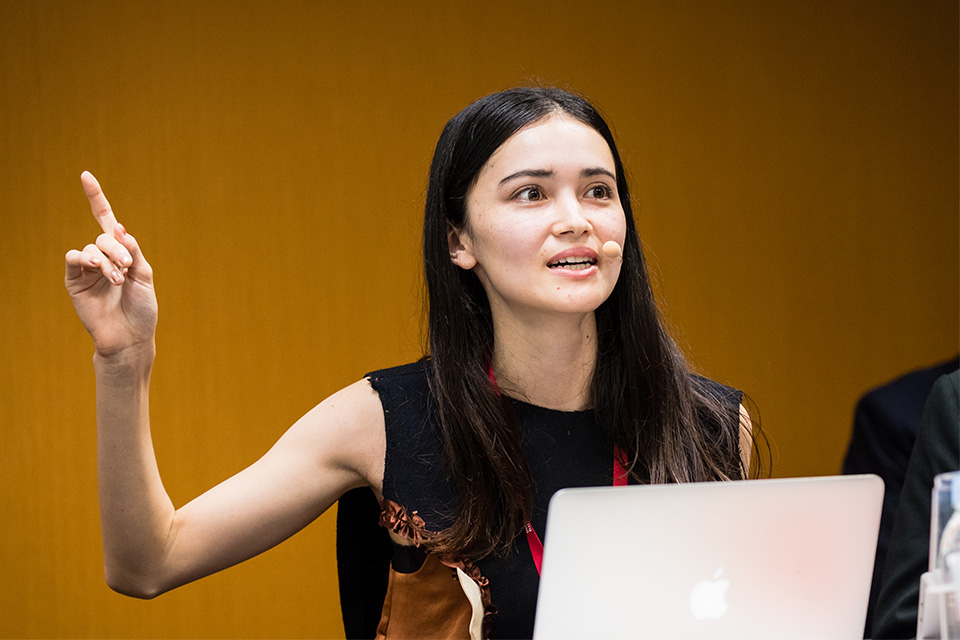 Risako Nakamura,
Risako Nakamura,
a fashion designer and digital fabricator
Risako Nakamura is a digital fabricator who takes a radical approach to fashion design. Using high-performance scanners and 3D printing and modeling technologies to digitize fabrics and the human form, she then combines them with traditional Japanese crafts such as lacquerware to create truly unique, personalized apparel.
She gets creative inspiration from both industrial technologies and traditional crafts. At TechShop Tokyo she creates initial prototypes. She also travels to meet artisans to learn about their traditional craftsmanship and techniques.
Through her experiences, she has come to understand the dilemma of traditional craftspeople who feel threatened by advances in technology. But she sees great potential for collaborative co-creation with them and people at the urban makerspace. "TechShop helps us to discover many things and enables us to innovate. I feel this strongly while I’m working there," she said animatedly.
Touching on tech-enabled apparel of the future, she emphasized the continued importance of manual craftsmanship. "It's important not to just sit and think with your arms crossed, but to work with your hands and actually create something. Repeated trial-and-error cycles-like the rapid prototyping practiced in the modern design thinking method-are very important. A sense of community is also essential. The innovation of computers and internet connectivity allowed us to connect others’ past achievements into our own works. The same is true of interactions with the community at TechShop Tokyo, where I've recently been spending a lot of time in the woodworking room. I recently met a middle-aged man there who was making a violin every day. Interacting with him I learned a lot about woodworking, and became aware of many challenges and ideas that I had not encountered when working with textiles," Nakamura noted.
A Makerspace for Co-creation
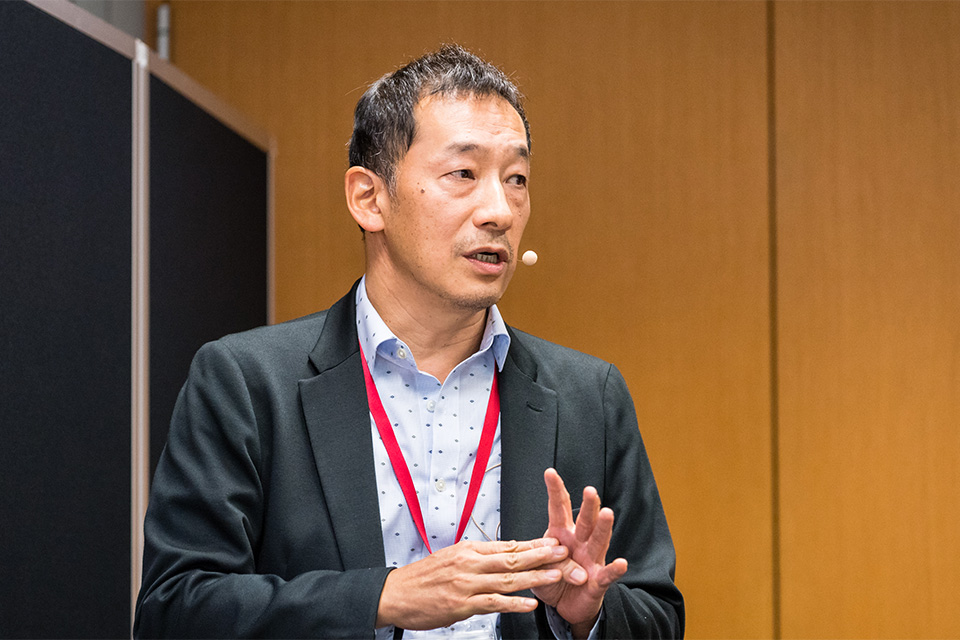 Shoichi Arisaka,
Shoichi Arisaka,
CEO of TechShop Tokyo Limited
TechShop Tokyo is a membership-based, 12,920 ft2 makerspace located on the third floor of the Ark Mori Building in Roppongi, Tokyo. With about 50 types of machine tools, including state-of-the-art laser cutters, 3D printers, and wood lathes, the facility also has experts on hand to provide advice and instruction in equipment handling. It also offers opportunities for members to interact with each other and meet with potential investors.
Shoichi Arisaka, TechShop Japan's CEO, described the TechShop Tokyo facility as a place for co-creation that not only gives shape to ideas, but also assists members in transforming those ideas into business opportunities. Membership currently stands at about 1,070, a wide variety of creators from students to entrepreneurs.
"Companies-including NTT, Yamaha Motor, Cookpad, and LIXIL-have also asked us to help them run open innovation workshops that invite the general public to help them develop new business, product, and service ideas from concept to prototyping," said Arisaka.
He also emphasized that DevOps approach is being applied to co-creation projects at TechShop Tokyo. "Generally speaking, when you need to deliver new products or new services, you go through a process of idea generation, realization, evaluation, and commercialization. At TechShop Tokyo, we offer a fusion of advanced manufacturing facilities, support staff, and peer interaction that creates an ideal environment for ideas to take shape. By enabling ideas to be tested before moving into mass production or launching a new business, it is an environment that closely parallels the DevOps approach that is our theme here today."
Panel Discussion
How will corporations and workstyles change?
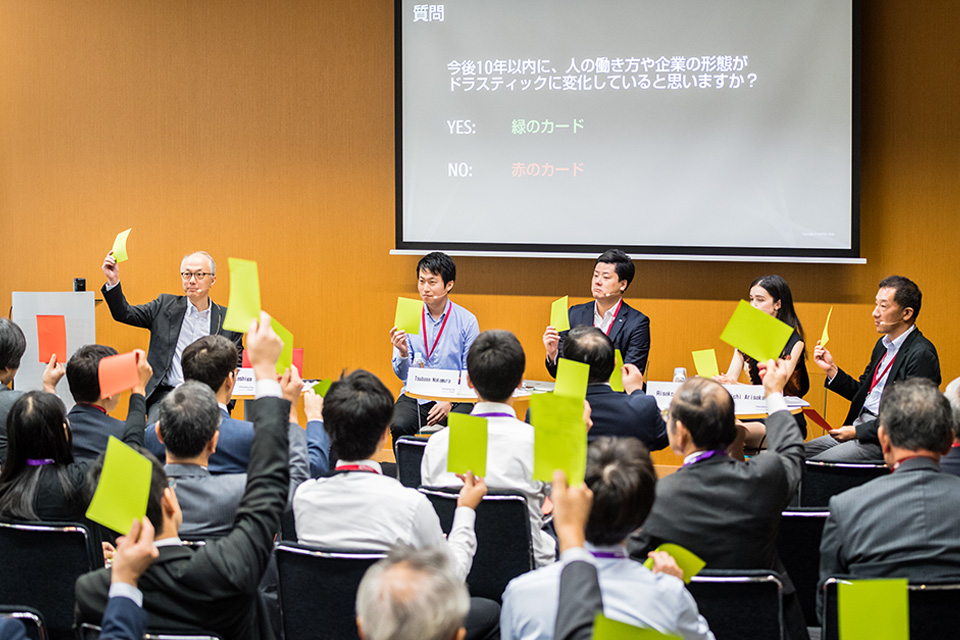
To open the panel discussion, Takashige posed a question to the audience:
"We have just heard about different schemes to support volunteer groups and individuals. These will alter the way of making products. Do you think this will bring about a drastic change in corporate structures and workstyles over the next decade?"
Most of the attendees agreed that it would, but they cited a variety of different reasons for their answer. One attendee pointed out that the increasing industrial power of China would force Japanese industry to change in response.
Nakamura of the SkyDrive project agreed, saying "there is no future if we don’t change." He also pointed out that "the internet makes it easier for start-ups to raise capital and find people to partner with. We hope our own project will also help create a community for change."
"I believe open innovation requires a passionate entrepreneurial leader," said Fukabori. "No one is an expert in everything. So we need to find producers who can proactively manage specialists across a broad range of fields with passion."
Is it possible for everyone to become a creator?
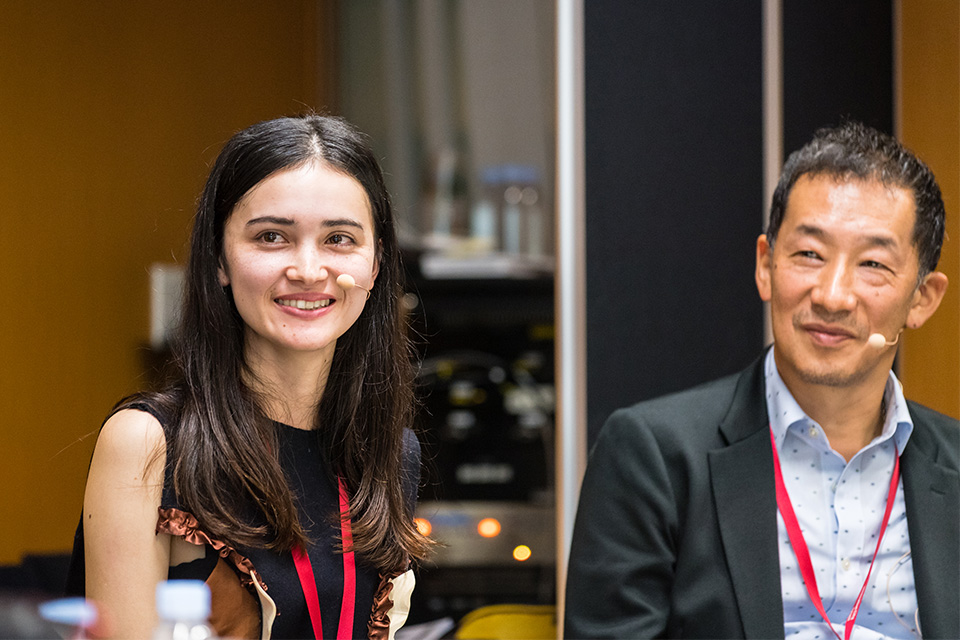
Takashige then posed a question that focused on the transformation of individuals. "The advance of AI and digital technologies will enable anyone to turn their ideas into reality more easily. Do you personally feel this is so-that we can achieve a world in which everyone can be a creator? Are you confident that you too can become a creator?"
Although this drew fewer positive responses than Takashige's first question, more than half the attendees answered “yes”. One young student said, "Although I don't have any specific vision yet, I want to start with small things in daily life, and grow from there." An engineer at a financial services company commented, "I want to enhance the blockchain technology that supports cryptocurrencies, and to pass it on to the next generation."
Referring to the words of Mark Hatch, the founder of TechShop in the U.S., TechShop Tokyo CEO Arisaka said, "All ideas are good ideas, worthy of being tested." He said he believes we are already at the point where everyone can become a creator. "Everyone becomes very positive if you show her/him real things and how they can be made. One elderly woman who came to TechShop Tokyo had no previous experience in making things. But after experiencing the process of making at our workshop and talking with expert staff and other members, her creativity blossomed-she truly became an artist. It was a remarkable transformation to see."
Digital fabricator Risako Nakamura spoke about her own definition of what it means to be a creator. She defines creators as "people who make things that never existed before." She added, "It isn't necessary to start from zero when you create something. But it is necessary to expose yourself to a variety of things and cultures, and digest them before customizing and interpreting them in your own way."
From Customers to Co-creation Partners
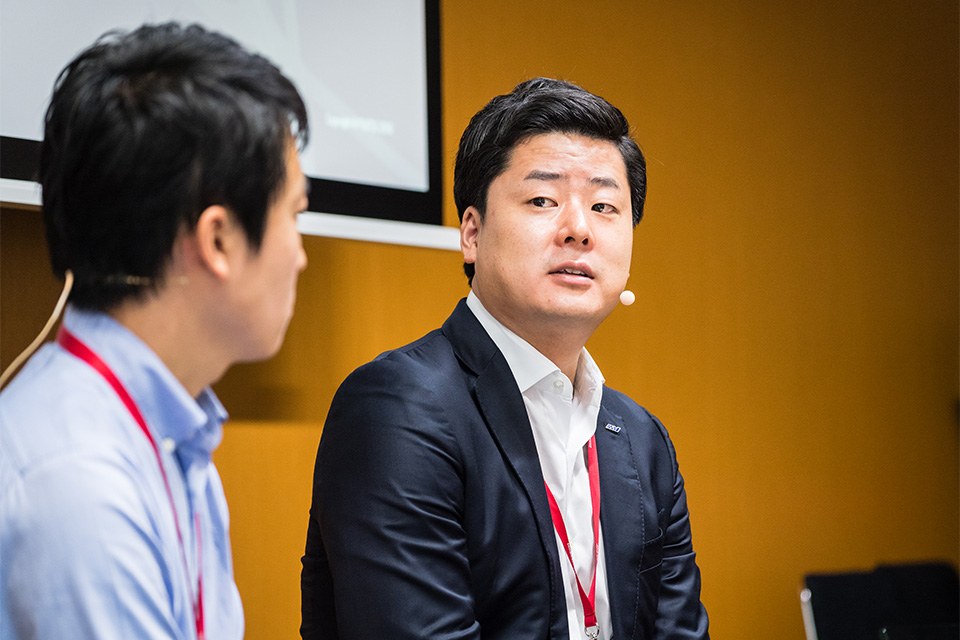
Near the end of the session, an audience member asked a question about the evolution from "product-out" to "human-centric" creativity.
She asked, "If we are entering an era when everyone is a creator and can create products on their own, what kind of change will happen to the relationship between producers and customers?"
In response, Takashige explained the important role of the "customer" in co-creation. "One of the important things in the coming era is that companies and customers work together to create new value. This is what we mean by co-creation-customers are not just customers, but active partners in co-creation. Companies develop products and services for customers, but customers also participate in development, providing their own unique views and ideas based on their experience. Companies and customers engage with each other as equals, and help each other achieve a better result. I believe this is the business model that will shape the future."
Fukabori agreed, saying, "When we create our avatars, we cannot identify best-practice use cases for them on our own. That's why we always ask users to participate in proof-of-concept projects. We don't just want to build and sell robots-we want to work together with our customers to create value and make our products easier to use."
How Do You Monetize Your Dreams?
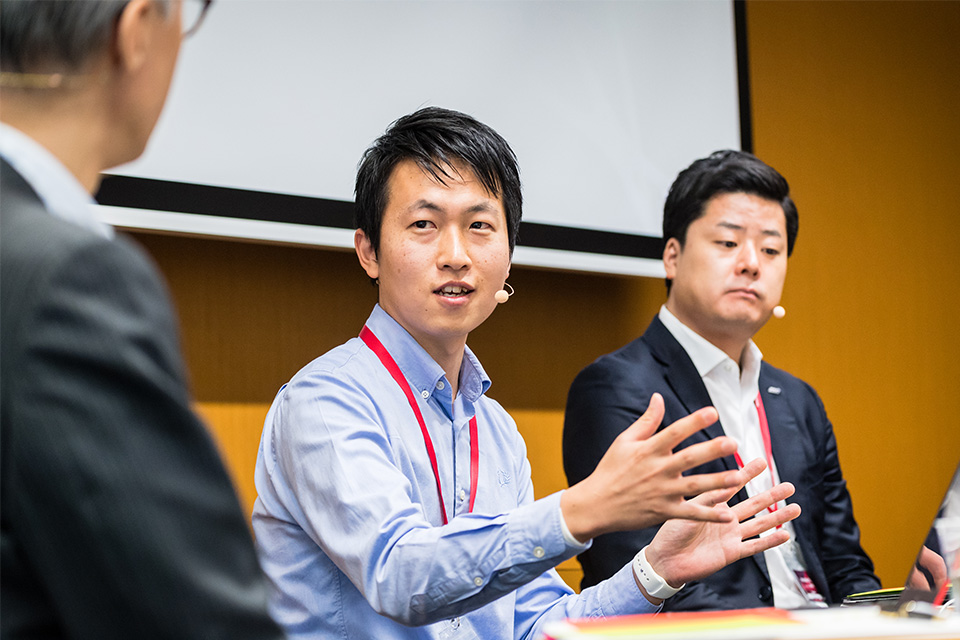
Another question from the audience addressed the issue of commercializing innovation. "The discussions have been very interesting, but how do you plan to monetize your dreams?"
Nakamura of the SkyDrive project replied that he and his team currently focus on development of the flying car, keeping in mind their mission to deliver a dream to the next generation. "We want to come back to the question of monetization after we complete development. We believe we can build a business based on the technologies and services that we will develop."
With regard to the ANA AVATAR VISION program, Fukabori responded that his company has positioned the program as a key initiative in corporate branding, and that they regard investment in the XPRIZE competition as an advertising expense. As to monetization, he noted that his team was planning to start a business built around the avatars and vision systems that are currently under development.
"Wild Visions" for the Year 2030
Before closing the session, Takashige invited the panelists to talk about their "wild visions for the year 2030." In response, Arisaka of TechShop Tokyo envisioned a world in which using 3D printers to create products has become commonplace, and the transformation of ideas into reality is extremely easy. Risako Nakamura took it a step further, expecting the emergence of 4D printers that can create products that change shape with the passage of time. Tsubasa Nakamura envisioned a world in which people fly everywhere in SkyDrive cars, and Fukabori saw a future in which avatars serve in every corner of daily life, providing people with virtual experience they could never have before.
It is not easy to make dreams come true, and our panelists all work hard every day to meet and overcome new challenges. They try to find people to share their dreams, build communities, and discover new ways to work together to deliver innovation, beyond the existing framework of corporations and individuals. They are groundbreakers and at the same time creators building cities of the future. They also share a deep commitment to pass on a better world to the next generation-and as the session ended, the audience paid tribute to their commitment with loud applause.




